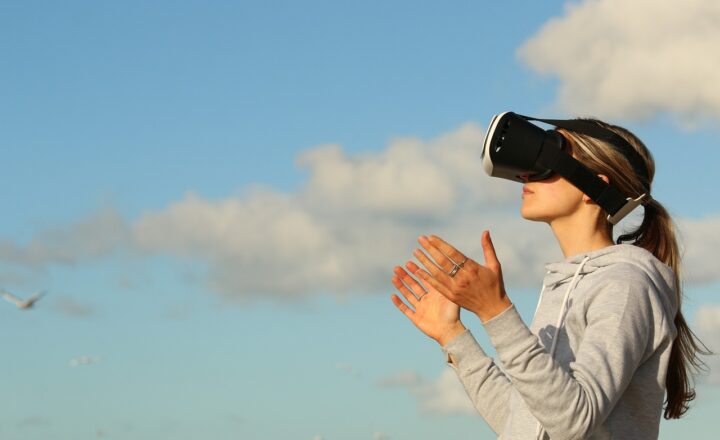How Reality TV Show Plots in the 2000s Blurred the Line Between Fact and Fiction
November 12, 2024

Reality television emerged in the late 20th century as a revolutionary genre, transforming the landscape of entertainment and redefining how stories could be told. However, it was in the 2000s that reality TV truly proliferated, capturing audiences with its compelling blend of scripted drama and unscripted moments. The era gave birth to numerous shows that not only entertained but also sparked debates about authenticity, ethics, and the very nature of reality itself. This article explores how the plots of reality TV shows in the 2000s blurred the lines between fact and fiction, impacting viewers’ perceptions and the television industry as a whole.
1. The Rise of Reality TV
The 2000s marked a period of explosive growth for reality TV, with shows like “Survivor,” “Big Brother,” “The Osbournes,” and “The Hills” taking center stage. The premise of presenting unscripted lives often created a deceptive simplicity, where participants navigated challenges that appeared spontaneous yet were, in fact, often meticulously crafted by producers. The success of these shows led to a gold rush for reality programming, with networks commissioning endless variations on the genre.
2. The Scripted Nature of Reality
While reality TV billed itself as unscripted, the reality was far more complex. Producers frequently crafted scenarios, guiding participants’ actions and conversations to create engaging narratives. This became apparent in popular shows like “The Real World,” in which storylines were heavily edited and crafted to enhance drama and tension among cast members. Moreover, producers often encouraged specific behaviors, blurring the lines between authentic reactions and those influenced by the show’s structure.
The phenomenon of ‘realism’ in reality TV was more akin to docudrama than true documentary. Audiences were drawn into the lives of participants, only to realize that much of what they were witnessing was staged or exaggerated for effect. The manipulation of circumstances and outcomes led many viewers to question what was genuine and what was manufactured.
3. Narrative Techniques and Their Impacts
Reality TV shows implemented various narrative techniques traditionally associated with scripted television. These included cliffhangers, conflicts, and character development arcs, enhancing the drama and emotional stakes. In shows like “The Bachelor,” producers would craft tense scenarios to drive narratives, such as emotional confrontations during the ‘rose ceremonies’ based on the various relationships that evolved throughout the season.
This narrative structuring shaped viewers’ perceptions, leading them to invest emotionally in the outcomes of contestant interactions. The blurring of lines became even more pronounced when reality stars began to develop personas, further disconnecting their on-screen characters from their real-life identities.
4. The Influence of Editing
Editing became a powerful tool in shaping the narratives of reality shows. The way scenes were ordered, music was utilized, and moments were highlighted could significantly influence how viewers perceived events and characters. For instance, the portrayal of specific cast members could swing dramatically from sympathetic to villainous based purely on strategic editing choices.
The editing process effectively created a new reality for viewers—one that often diverged drastically from the actual experiences of the participants. This further complicated the already ambiguous relationship between fact and fiction and played a key role in crafting narratives that felt more melodramatic than true-to-life.
5. The Impact on Viewers and Society
The blending of fact and fiction in 2000s reality TV had profound implications for viewers. Many began to perceive reality shows as reflections of real life, shaping their understandings of relationships, conflict resolution, and even identity. The media influenced cultural norms as audiences began to expect dramatization in everyday scenarios, believing that their own lives should resemble that of their favorite reality stars.
Moreover, reality TV encouraged a culture of voyeurism, leading viewers to become invested in the personal lives of strangers, blurring ethical boundaries around privacy and representation. Audiences were continuously bombarded with constructed narratives under the guise of reality, leading to the rise of social media bombshells and trending topics that distorted public perceptions of normalcy.
6. Reality TV and Celebrity Culture
The 2000s saw the rise of reality television stars who transitioned into mainstream fame, trading on their manufactured personas as if they were genuine. Lindsey Lohan, the Kardashians, and many others were marketed as relatable figures, despite their fame being rooted in contrived situations. This led to a new paradigm wherein reality stars leveraged their on-screen narratives to build brands, blurring the lines between authenticity and celebrity.
The emergence of social media platforms during this era further compounded these issues; reality stars utilized platforms like Twitter and Instagram to curate their personal brands, presenting an edited version of their lives that paralleled the drama portrayed on television.
Conclusion: Navigating Reality and Illusion
The 2000s heralded a transformative era in television, where reality TV shows began to blur the boundaries between fact and fiction more than ever before. They created narratives competing with traditional scripted television, leaving audiences grappling with the implications of what they were watching. The marriage of authenticity and fiction continues to influence contemporary television, and as viewers, we must navigate these created realities critically. As entertainment evolves, understanding the intricate relationships between media, authenticity, and narrative will remain a pivotal part of our consumption, reminding us that what we see may not always be the full truth.







